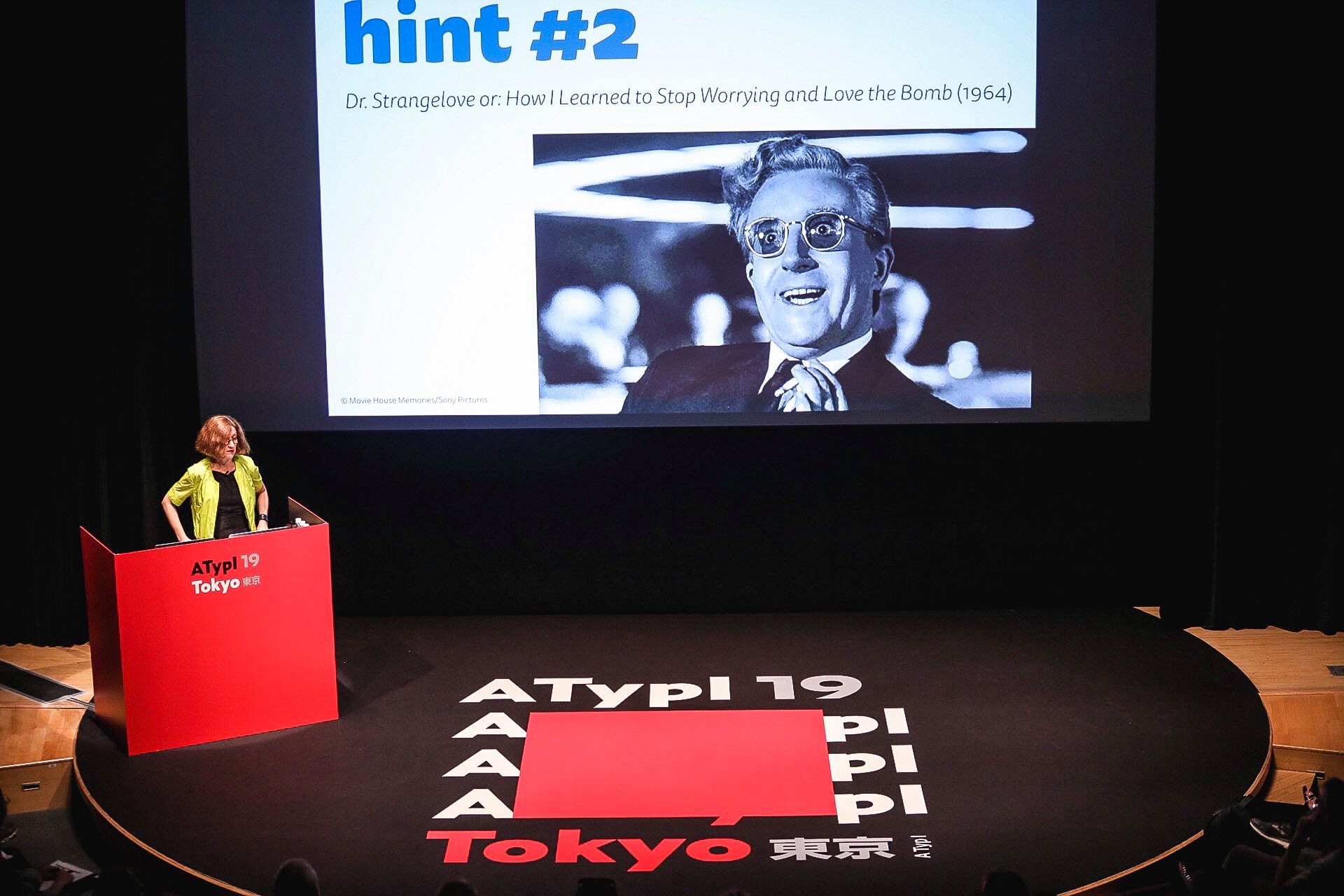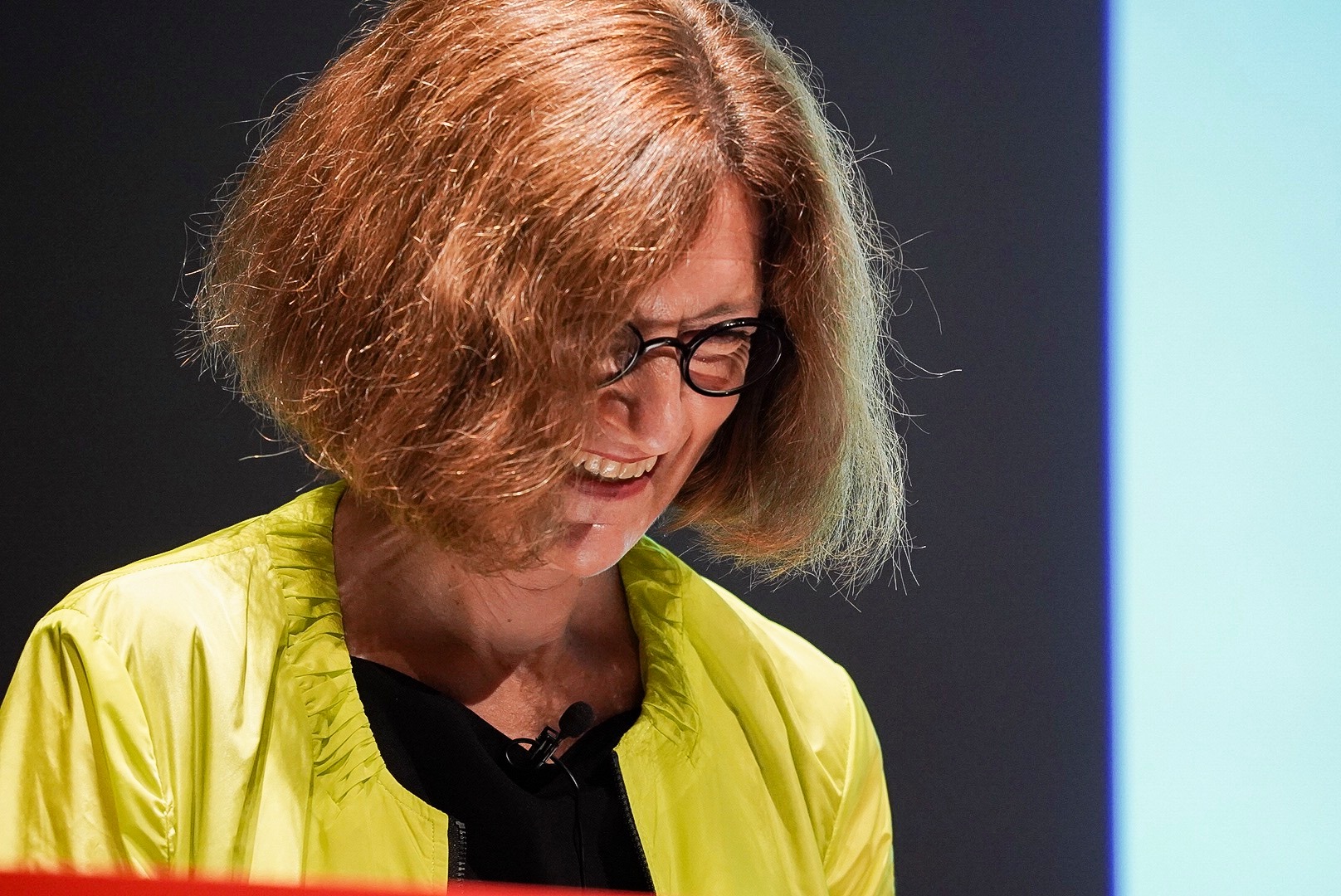Pekinpah member and head of Information design section, Petra Černe Oven was invited to give a closing keynote presentation at the world congress of the Association Typographique Internationale on 7 September 2019 in Tokio.
Photo: Luke Garcia and Rodrigo Esper
ATypI, Association Typographique Internationale
Petra Černe Oven | Closing Keynote |
News from Nowhere or: How I Learned to Stop Worrying and Love Doing Research in a Small European Country
Conference attendees represent the global community of type and typography professionals, students, and enthusiasts from all levels of experience and a variety of fields. Amongst them are type designers, graphic designers, UX designers, project managers and software engineers, web designers, information designers, researchers, historians, educators, writers, publishers, lettering artists, calligraphers, students, and interested others from around the world.
Petra’s keynote interwove three layers: the first layer offered a glimpse into the work of influential Slovenian modernist architect, sculptor, and graphic designer Jože Brumen (1930–2000). The second layer reflected upon her findings and connected research process. And the third layer put historical research into the context of contemporary design and its future.
This exploration pointed to the existence of many hidden gems which are not yet on the world map of “official” design history. In 2010, design thinker Victor Margolin said, “the history of design is central to the history of the world.” It is therefore high time we begin mapping all of its missing parts. To this end, she broached questions about the relationship between design and history and the importance of rigorous research, while addressing the obstacles and pitfalls of such undertakings. Projects from the past can lend insights into technological development, as well as the influence of the geopolitical contexts which shaped the design professions of individual cultures.
Petra also pointed out that only through gaining an understanding of their roots and their collective pasts may designers find professional identity and recognize the role of design in contemporary society. With all of this in mind, they may envision solutions for the future: solutions which will bring about a positive change to the (for now) bleak prospects surrounding the presence of humans on Spaceship Earth.
The keynote was delivered to the huge audience of 550 attendees and was warmly accepted by some as “the highlight of the conference”.



